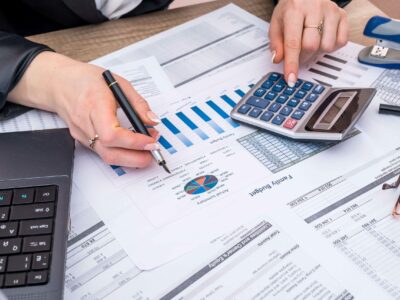
Thecumulative period cost formula cost variance is often calculated for a time horizon from thebeginning of a project to the most recent period. Cost Variance (CV) is an indicator of the difference between earned value and actual costs in a project. It is a measure of the variance analysis technique which is a part of the earned value management methodology (EVM; source). Some argue that is an element of the earned value analysis (EVA) as well.
How to calculate retained earnings for better financial forecasting

Instead, these costs are added over time and charged during a specific accounting period. Period costs are subtracted from the company’s revenue in the period in which they are charged rather than being recorded and allocated to the cost of goods sold (COGS) or inventory. By following the step-by-step guide outlined in this article, companies can ensure accurate and timely period cost calculations, providing a solid foundation for informed business decisions. As shown in the income statement above, salaries and benefits, rent and overhead, depreciation and amortization, and interest are all period costs that are expensed in the period incurred. On the other hand, costs of goods sold related to product costs are expensed on the income statement when the inventory is sold. The main components of total manufacturing cost are direct materials, direct labor, and manufacturing overhead.

Product costs:
Explore the role of period costs in financial management, from accounting practices to strategic pricing and budgeting, for informed business decisions. Period cost is those which are incurred periodic and are not related to product cost or manufacturing cost. HowePeriod cost is those which are incurred periodically and are not related to product cost or manufacturing cost. However, all the expenses are not related to product cost except for the cost of goods sold. Hence, while taking a total of the period expense, we will exclude them. A period cost can be termed as any cost that cannot be categorized into prepaid expenses, fixed assets, or inventory.
Importance of Period Costs in Financial Analysis
- In other words, they are expensed in the period incurred and appear on the income statement.
- Further, these expenses are not mentioned in the balance sheet but are treated in the income statement.
- Primarily, these classifications occur through the time to which costs relate.
- Therefore, period costs are only recognized as expenses in the income statement.
- When setting prices for products or services, businesses must ensure that all costs, including period costs, are covered to maintain profitability.
- Product costs have a direct link with the production of the product, whereas, period costs do not directly link with the product production.
Also termed as period expenses, time costs, capacity costs, etc these are apportioned as expenses against the revenue for the given tenure. Some examples include General administration costs, sales clerk salary, depreciation Oil And Gas Accounting of office facilities, etc. As explained above, period costs are the costs that match the current period’s revenue only. So even if an expense has been accrued and will be paid for in the future, it shall be reported on the income statement as a period expense. There are several examples of period costs in managerial accounting in practical scenarios.

In general, fixed costs include fixed production overhead and administrative overhead. The fixed cost per unit of production will https://www.fedelecarlo.it/2024/09/11/reorder-point-definition-formula-how-to-calculate/ fluctuate inversely with output level variations. Period costs are always recognized in profit or loss in the period in which they are incurred.
What separates period costs from product costs?
If no direct connection to revenue can be established, the costs are recognized in the period they arise. For instance, office rent is recorded as an expense in the month it is paid, irrespective of the sales activities of that month. This treatment ensures that the financial statements accurately reflect the company’s operational costs and help in assessing its profitability during a specific accounting period.
Accurate Tax Filings
Direct Labor refers to the wages paid to workers who are directly involved in manufacturing the product. These are employees who physically assemble the product or operate machinery. To find the total manufacturing cost, you must calculate the total wages paid to direct labor during a specific period. Managing fixed period costs involves careful budgeting and planning to ensure that the business can cover these expenses even during periods of low revenue or economic downturns.
- First-in, first-out (FIFO) costing addresses this problem by assuming that the first units worked on are the first units transferred out of a production department.
- It’s essential to get an accurate rate to properly calculate total manufacturing costs.
- First, identify the cost of direct materials, which includes all raw materials used in production.
- Looking at the period-by-period costvariances leads to a more differentiated picture.
- The firm will not incur enabling costs if operations shut down but will incur them if operations occur.
- Integrating these systems with other business tools ensures smooth operations and better decision-making.
Importance of Cost Management Systems
It’s important to identify areas where you can cut costs or become more efficient. Period costs tend to remain constant over time, making them predictable for budgeting purposes. However, business owners should always look for opportunities to minimize these costs, especially in times of financial strain or when striving to improve profit margins. When you know how much of your expenses are tied to non-production costs, you can make more informed decisions about where to cut costs, invest more, or allocate resources more efficiently. This makes it hard to know the exact cost of manufacturing a product now.
Product costs have a direct link with the production of the product, whereas, period costs do not directly link with the product production. The main difference in accounting is their treatment in the financial statements. Office rent and other general administrative expenses are treated as period costs. Forecasting, on the other hand, involves projecting future period costs based on historical data, economic trends, and anticipated changes in the business environment. This forward-looking approach enables companies to predict potential financial challenges and opportunities, allowing for proactive adjustments to their strategies.
By leveraging Period Cost data in decision-making processes, businesses can enhance operational efficiency, mitigate risks, and achieve sustainable growth and profitability in the long term. Period expenses appear on the income statement with an appropriate caption for the item, which acts as a disclosure, in the period when the cost is incurred or recognized. For example, it costs your company $1,200 to acquire a new customer who generates $200 in monthly recurring revenue. To calculate how long it takes to make that money back, we’ll put the numbers into the formula to get the CAC Payback Period. Product costs only become an expense when the products to which they are attached are sold.
